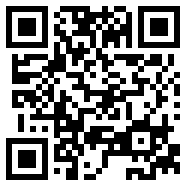 Michael Josefowicz, self-styled “print evangelist” and a frequent commenter here at Nieman Journalism Lab, has a new post at PBS’s MediaShift that will bring you up to date on QR codes, which look to be “CueCat done right.”
Michael Josefowicz, self-styled “print evangelist” and a frequent commenter here at Nieman Journalism Lab, has a new post at PBS’s MediaShift that will bring you up to date on QR codes, which look to be “CueCat done right.”
QR stands for “quick response.” QR codes are two-dimensional scanning code blocks that can be placed in print ads. Readers scan the code with their Web-enabled cell phone and are instantly connected with Web content relevant to the ad. Marketers get an instant read on how well their ad is working and how much of their Web traffic is print-driven. The codes are fairly common in Japan and are beginning to show up in European publications. As usual these days, we’ll see this in the U.S. somewhere down the road.
QR codes can be used by journalists as well — they can be included in a print story to connect readers with background or detail, or to provide feedback to reporters and editors. The QR responses can also help sort out what kinds of readers like what kinds of content. Josefowicz:
For an editor or journalist, QR codes can deliver real time data on the most ineffable and important feedback, answering questions like “Is this story interesting to people who live in a geographically defined community?” While there is an approximation of the “interesting” factor on the web, the fact is that the web is still for a niche audience of very interested people. If the task is to engage the previously uninterested, data from web clicks is much too noisy.
QR codes have the potential to cut through that noise and help transform the way we use these media. My personal passion is not print or newspapers, it’s fixing high school education. Since I believe that print is the best learning tool and the web is the best talking and tracking tool, as the connections grow between these two media, a tipping point in educating our young people will emerge. That’s one way the world is changing.
The common wisdom about print has created a ferocious noise that has drowned out the signals of new print-to-the-cloud technology. I will try to amplify that signal over the next few weeks. Once it gets on the radar of journalists and newspaper publishers, the world will change, again.
It’s intriguing to speculate about the many ways QR could be applied: advertisers could put them on bus and subway ads; vandals could create QR stickers — scannable graffiti; authors could put them in books to link to content updates; AAA could put them on maps to link members to local services and attractions.
QR is open-source. I generated the one illustrating this post via Kaywa’s QR code generator; it decodes to the Nieman Lab URL.